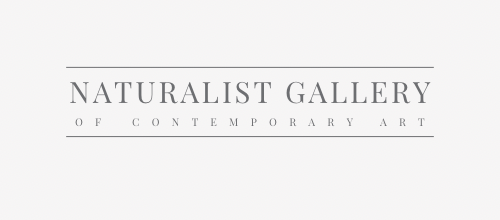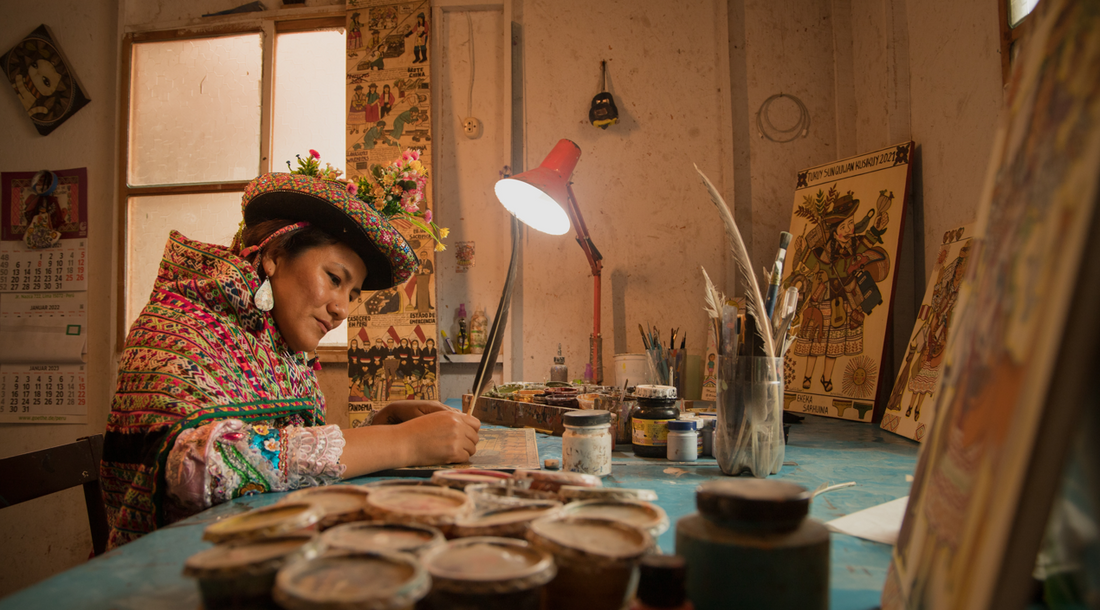When it comes to painting, choosing the right medium is crucial for achieving the desired results.
Acrylic, oil, watercolor, gouache, tempera, encaustic, pastel, ink wash, spray paint, casein, and mixed media are some popular paint mediums. Each offers unique characteristics and effects for artists to explore and create with.

Explore our curated selection of contemporary artists from around the globe.
Naturalist Gallery offers artist representation internationally. Apply your art.
With a wide variety of options available, it can be challenging to determine which paint medium is best suited for your needs. In this comprehensive guide, we will compare and explore different paint mediums, including tempera, acrylic, oil, watercolor, gouache, pastel, ink wash, spray paint, casein, encaustic, and mixed media, to help you make an informed decision.
Tempera Paint:
- Pros: Relatively inexpensive, easy to find, good for beginners, long-lasting, safe for both adults and kids.
- Cons: Cannot be applied too thickly, inability to attain deep color saturation.
- Durability: Tempera is known for its durability and long-lasting nature, making it suitable for various settings.
- Drying Time: Tempera dries rapidly, producing a smooth matte finish when dry.
- Versatility: Tempera can be used on various surfaces, creating transparent or three-dimensional effects.
- Texture: Tempera has a delicate and complex texture, with a smooth and velvety feel when dry.
- Lightfastness: The lightfastness of tempera paint depends on the pigments used, with some brands offering fade-resistant options.
Sandro Botticelli, tempera (1485) The Birth of Venus
Acrylic Paint:
- Pros: Fast drying, no harsh chemicals, versatile finishes, suitable for different surfaces, non-yellowing and UV-resistant.
- Cons: Can crackle under certain conditions, susceptible to cracking or chipping in extreme temperatures.
- Durability: Acrylic paint is resistant to fading, humidity, and light, but less resistant to heat and cold.
- Drying Time: Acrylics dry relatively quickly, allowing for faster layering and application.
- Versatility: Acrylics can be used on various surfaces, easily thinned or thickened to create different textures.
- Texture: Acrylic paint has a thicker consistency than watercolor but not as thick as oil paint.
- Lightfastness: Acrylics are made with lightfast pigments, making them resistant to color breakdown when exposed to light.
David Hockney, acrylic (1972) Portrait of an Artist (Pool with Two Figures)
Oil Paint:
- Pros: Slower drying time, rich and highly pigmented colors, allows for working transparently, suitable for creating complex paintings.
- Cons: Longer drying time, prone to yellowing and darkening over time, not suitable for artists who dislike waiting for paint to dry.
- Durability: Oil-based paints are more durable and dry harder than water-based paints, but can become dry, brittle, and chalky over time.
- Drying Time: Oil paints have a slow drying time, allowing for extended work and blending periods.
- Versatility: Oil paint offers a wide range of possibilities for texture, color, and realism, suitable for various surfaces.
- Texture: Oil paint has a thicker and creamier texture, ideal for adding dimension and texture to paintings.
- Lightfastness: Oil paint is generally very lightfast and does not dissolve with light exposure.
Claude Monet, oil (1872) Impression, Sunrise
Watercolor Paint:
- Pros: Suitable for travel, produces delicate gradations of color, achieves luminous effects, allows layering of colors.
- Cons: Requires practice to master, appears blotchy if not applied evenly, requires paper to avoid mess.
- Durability: Watercolors can be long-lasting if properly cared for and protected from sunlight.
- Drying Time: Watercolor dries quickly due to its water-based nature, but the application requires control over water content.
- Versatility: Watercolor is versatile, suitable for small-scale projects, large murals, and conveying emotion and imagination.
- Texture: Watercolor has a thin and flat consistency, but interesting textures can be achieved by adding gesso or acrylic paint.
- Lightfastness: Watercolors can be fugitive and prone to fading when exposed to direct sunlight, but high-quality pigments and paper can improve lightfastness.
Albrecht Dürer, watercolor (1502) Hase (Young Hare)
Gouache Paint:
- Pros: Dries quickly, vibrant and opaque colors, versatile surfaces, achieves results similar to oil and watercolor.
- Cons: Expensive, tends to crack in heavy layers, becomes darker when dry, not water-resistant.
- Durability: Gouache is resistant to UV light and moisture, making it suitable for indoor and outdoor projects.
- Drying Time: Gouache dries quickly on the surface while remaining workable for a longer period, allowing corrections.
- Versatility: Gouache can create a variety of effects, suitable for paper, wood, and fabric.
- Texture: Gouache has a velvety texture achieved by adding an opaque white pigment to the paint.
- Lightfastness: Gouache lightfastness is not guaranteed, so limiting sun exposure is recommended.
John Singer Sargent, gouache and watercolor (1906) Bedouins
Pastel Paint:
- Pros: Rich and vibrant colors, blendable and easy to use, no drying time required, allows for expressive mark-making.
- Cons: Fragile and smudge easily, requires fixative to preserve artwork, can be messy to work with.
- Durability: Pastel paintings require protection from smudging and crumbling by using fixatives or framing.
- Drying Time: Pastels do not require drying time as they are a dry medium.
- Versatility: Pastels can be used on various surfaces, including specialized pastel paper and textured surfaces.
- Texture: Pastels have a soft and powdery texture, allowing for smooth blending and layering of colors.
- Lightfastness: The lightfastness of pastels varies depending on the pigments used, so selecting high-quality brands is important.
- Pros: Transparent and fluid, allows for detailed and precise work, compatible with various surfaces, produces unique textures.
- Cons: Requires practice to control ink dilution, difficult to make corrections once dry, not ideal for large-scale projects.
- Durability: Ink wash paintings can be long-lasting if protected from moisture and direct sunlight.
- Drying Time: Ink dries relatively quickly, allowing for layering and adding details.
- Versatility: Ink wash can be used on paper, fabric, and other surfaces, creating different effects and textures.
- Texture: Ink wash creates a smooth, flowing texture with the possibility of adding intricate details.
- Lightfastness: The lightfastness of ink wash depends on the quality of the ink and the paper used.
Qi Baishi, ink wash (1946) Shrimps
Spray Paint:
- Pros: Quick and even application, versatile for large-scale projects, produces unique textures and effects.
- Cons: Requires proper ventilation, limited color options, difficult to control for detailed work, may require protective gear.
- Durability: Spray paint can be durable, but proper surface preparation and sealing are important for longevity.
- Drying Time: Spray paint dries quickly due to its aerosol nature, allowing for layering and additional coats.
- Versatility: Spray paint is commonly used on walls, canvas, and other surfaces, offering quick coverage and smooth finishes.
- Texture: Spray paint creates a textured surface with a distinct, even pattern.
- Lightfastness: The lightfastness of spray paint can vary depending on the brand and pigments used.
Banksy, spray paint (2003) The Flower Thrower
Casein Paint:
- Pros: Quick-drying, water-soluble, matte finish, versatile application, compatible with various surfaces.
- Cons: Limited color range, can become brittle over time, not suitable for layering like oils or acrylics.
- Durability: Casein paint is known for its durability and resistance to cracking, but proper surface preparation and sealing are important.
- Drying Time: Casein paint dries quickly, allowing for faster layering and application.
- Versatility: Casein can be used on various surfaces such as canvas, wood, and paper, offering different effects.
- Texture: Casein paint has a smooth and velvety texture, similar to tempera or gouache.
- Lightfastness: Casein paint is generally lightfast, but some colors may have lower lightfastness ratings.
Gustav Klimt (1902) The Hostile Powers, the Titan Typhoeus, the Three Gorgons
Encaustic Paint:
- Pros: Unique and textured finish, vibrant colors, durable and long-lasting, can be reworked and layered.
- Cons: Requires special tools and equipment, can be difficult to master, potential health hazards due to heating process.
- Durability: Encaustic paintings are highly durable and resistant to moisture, but protecting them from excessive heat is essential.
- Drying Time: Encaustic paint dries quickly as it cools, allowing for immediate layering and adjustments.
- Versatility: Encaustic paint can be applied to various surfaces, including wood, canvas, and paper, creating unique textures.
- Texture: Encaustic paint has a distinct texture with a smooth, glossy finish, providing depth and luminosity.
- Lightfastness: Encaustic paint is generally lightfast, but it's recommended to use high-quality pigments for optimal lightfastness.
Jasper Johns, encaustic (1955) White Flag
Mixed Media:
- Pros: Endless creative possibilities, combines different mediums for unique effects, allows for experimentation.
- Cons: Requires knowledge of various mediums, can be challenging to achieve cohesive results, may require specialized techniques.
- Durability: Mixed media artworks' durability depends on the combination of materials used, requiring proper care and preservation.
- Drying Time: Drying time varies depending on the mediums used in the artwork.
- Versatility: Mixed media allows artists to combine multiple mediums such as paint, collage, ink, and more on various surfaces.
- Texture: Texture in mixed media artworks can vary depending on the materials and techniques employed.
- Lightfastness: Lightfastness depends on the individual mediums used in the artwork.
Tom Wesselmann, mixed media (1962) Still Life #20
View limited edition prints by contemporary artists at Naturalist Gallery.
Choosing the right paint medium depends on factors such as drying time, durability, versatility, texture, lightfastness, ease of use, and the desired painting style. Tempera, acrylic, oil, watercolor, gouache, pastel, ink wash, spray paint, casein, encaustic, and mixed media offer different characteristics and benefits. Consider your preferences, project requirements, and budget to make an informed decision. Remember to experiment and have fun exploring different paint mediums to enhance your artistic expression.

You may also find the following articles helpful:
How to Become a Successful Artist
How to Clean and Preserve Oil Paintings
How to Get Your Artwork Application Ready



